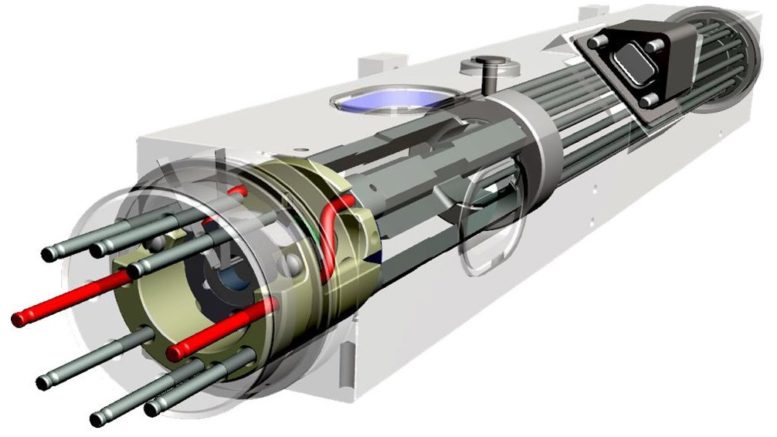A specific miniaturized type of atomic clock, the Deep Space Atomic Clock is a ultra-precise mercury-ion atomic clock that would be utilized for precise radio navigation in deep space. Managed by the NASA Jet Propulsion Laboratory and activated in summer 2019, the Deep Launched was launched aboard a SpaceX Falcon Heavy rocket in 2019 as part of the Space Test Program 2 launch by the US Air Force.
As current-ground based atomic clocks are fundamental to deep space navigation, any potential miniaturization of atomic clocks, without sacrificing accuracy is crucial. As current ground-based atomic clocks are too large too fit into existing spacecraft, the previous solution was to collect and process the tracking data on Earth for deep space navigation. However, the breakthrough is that the Deep Space Atomic Clock is orders of magnitude more stable than existing navigation clocks, and has been refined to limit drift of no more than 1 nanosecond in 10 days. Moreover, the Deep Space Atomic Clock is small enough to fit into future spacecraft and be accurate enough to improve the precision of deep space navigation. This would also enable an improved efficiency in use of tracking networks for deep space devices.
The improved efficiency and accuracy is based upon miniaturized and stabilized mercury ions that make up a stable atomic clock. This stability makes the atomic clock as stable as a ground clock. This would enable autonomous radio navigation for spacecraft’s time-critical events such as orbit insertion or landing, promising new savings on mission operations costs.
NASA says that the applications in deep space include and are not limited to: [1]
- Simultaneously track two spacecraft on a downlink with the Deep Space Network (DSN).
- Improve tracking data precision by an order of magnitude using the DSN’s Ka-band downlink tracking capability.
- Mitigate Ka-band’s weather sensitivity (as compared to two-way X band) by being able to switch from a weather-impacted receiving antenna to one in a different location with no tracking outages.
- Track longer by using a ground antenna’s entire spacecraft viewing period. At Jupiter, this yields a 10–15% increase in tracking; at Saturn, it grows to 15–25%, with the percentage increasing the farther a spacecraft travels.
- Make new discoveries as a Ka-band—capable radio science instrument with a 10 times improvement in data precision for both gravity and occultation science and deliver more data because of one-way tracking’s operational flexibility.
- Explore deep space as a key element of a real-time autonomous navigation system that tracks one-way radio signals on the uplink and, coupled with optical navigation, provides for robust absolute and relative navigation.
- Fundamental to human explorers requiring real-time navigation data.
Resources:
[1]=“Deep Space Atomic Clock” (PDF). NASA. 2014.
https://www.nasa.gov/mission_pages/tdm/clock/index.html
https://www.jpl.nasa.gov/missions/deep-space-atomic-clock-dsac/

Leave a comment